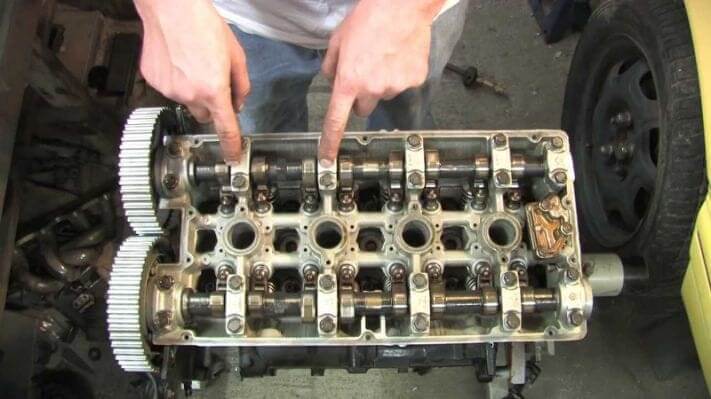Toggle Navigation
When it comes to cylinder head parts and functions, many people do not have adequate information. That is why we wrote this article. It contains details about the role of different parts of a cylinder head. We also included images for the cylinder head components to help you understand them better.
A cylinder head may look simple from outside. However, it is a complex structure containing ports and spaces to hold different components. Here are pictures of cylinder head parts, names, and the functions of each.


This is the part found between the cylinder head and the engine block. A cylinder head gasket is set with bolts to the top of the engine housing. It is usually made of steel metal. One of the main functions of a cylinder head gasket is to act as a seal between the cylinder head and the engine block. It prevents oil and engine coolant from leaking or mixing. Intake and exhaust gases, too.
Another important cylinder head gasket in cars is to help maintain the pressure of combustion gases. Without the gasket, the two components are likely to fail as a result of loss of pressure. This would, in turn, cause the engine to reduce its performance significantly.
The head gasket life expectancy varies depending on vehicle usage. Heat destroys it quickly. Excessive temperatures are the main cause of a split head gasket and should be avoided. Performance head gaskets are made to withstand harsh conditions and last a long time.

The intake and exhaust ports are part and parcel of the cylinder head. The intake manifold function is to channel air through the passages in the cylinder head and into the combustion chamber.
After the combustion process, the gases produced must be removed. That is the role played by the exhaust. The exhaust ports connect to the exhaust manifold to drive out the gases. This prevents a buildup of internal pressure, which would otherwise result in an explosion.

In an engine, valves close and open to let in or block the entry of air and fuel into the combustion chamber. Each cylinder in an internal combustion engine has two valves- the intake valve, which is usually bigger and a smaller exhaust valve.
Several components hold and control the working of cylinder head valves. The parts are explained next.

The cylinder head parts list cannot be complete without mentioning the combustion chamber. This part can be said to be the core of the engine. The cylinder head combustion chamber is where the air/fuel mixture burns to produce the power to move a vehicle.
Combustion chambers take different shapes and sizes. It depends on the type of engine and vehicle application. The chamber comprises the cylinder head with its ports and valves, the cylinder and cylinder walls, and the piston with its connecting rod.

Spark plugs are found in gasoline engines. They convey electricity to the combustion chamber to ignite the air/fuel mixture. The plugs usually mount on the cylinder head, with their tips going right into the combustion chamber. To ensure an airtight seal, the spark plug mounts are usually threaded.

On the cylinder head cover, you will also find fuel injectors. These are basically valves but electronically controlled. In a diesel engine, the injectors push fuel into the combustion chamber directly, with the help of the injection pump. Fuel injectors in a petrol engine use an indirect mechanism for the same function.

Overhead camshaft or OVC cylinder heads house the camshaft. On these cylinder head types, the camshaft works the opening and closing of the valves in a timed manner. The crankshaft, which is one of the engine block components, drives the cylinder head camshaft using a belt.

The cylinder head cover also contains pathways for coolant to cool the engine, and oil for lubrication purposes. Cylinder head port designs vary, just like the head designs do. Essentially, every type of construction aims at making the part as efficient as possible.
The performance of the cylinder head affects the operation of different cylinder block parts directly. The cylinder head cover gasket, too. When these two parts fail, the engine may not function as required.
A leak of coolant due to cracks or blown head gasket causes the engine to overheat. It can also reduce the compression ratio and make the vehicle to struggle uphill or during acceleration.
Therefore, inspect the head and the head gasket regularly, and fix or replace them if damaged. Also, the cylinder head parts such as valves, springs, and other components.
The cylinder head contains most of the mechanical components of an engine. As a result, it determines the engine’s behavior in terms of torque, emissions, cooling, and even acoustics. Armed with the information about the cylinder head parts and functions discussed in this article, you will care for the head better. That, in turn, would mean an engine that performs at its optimum.